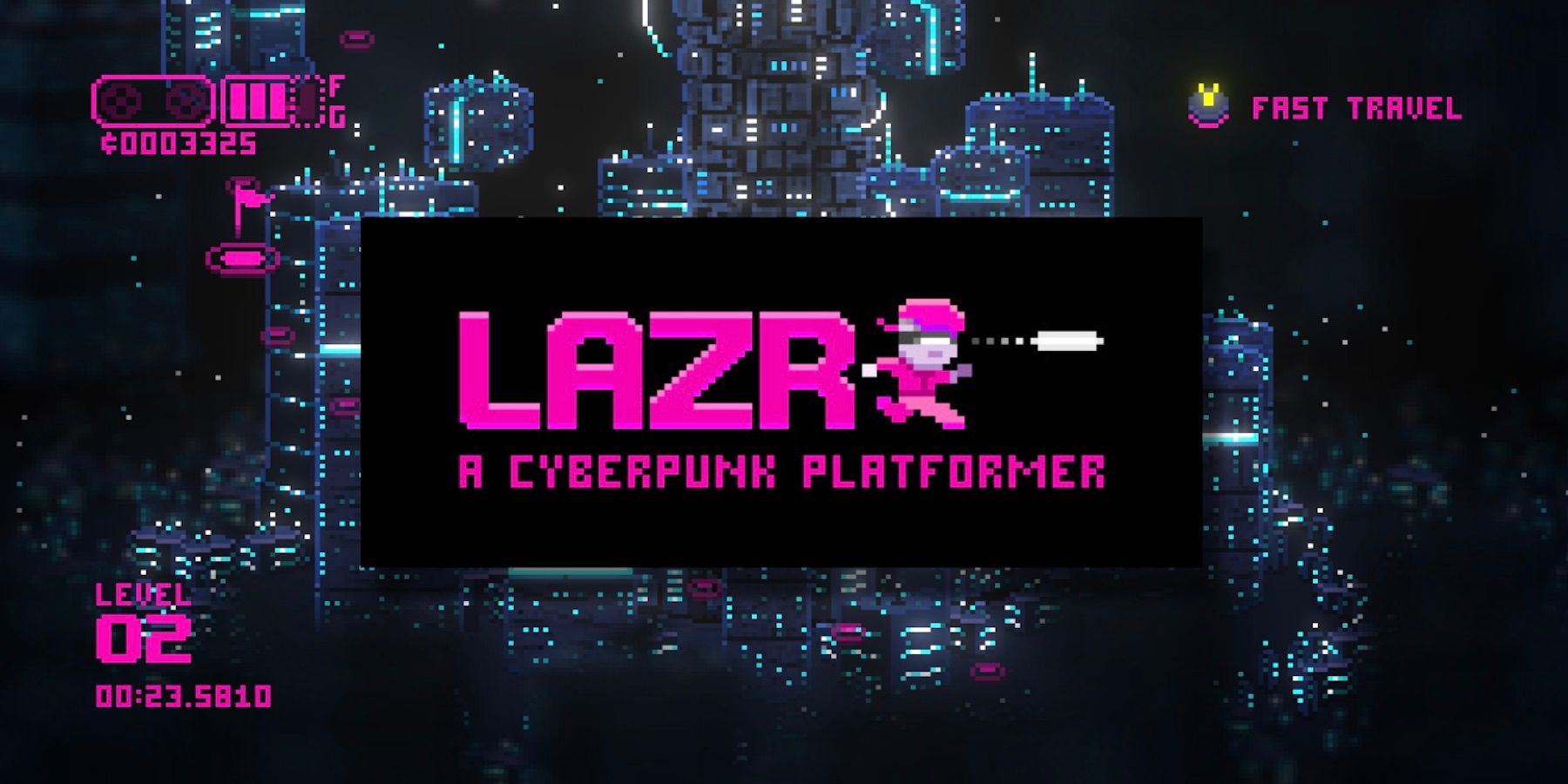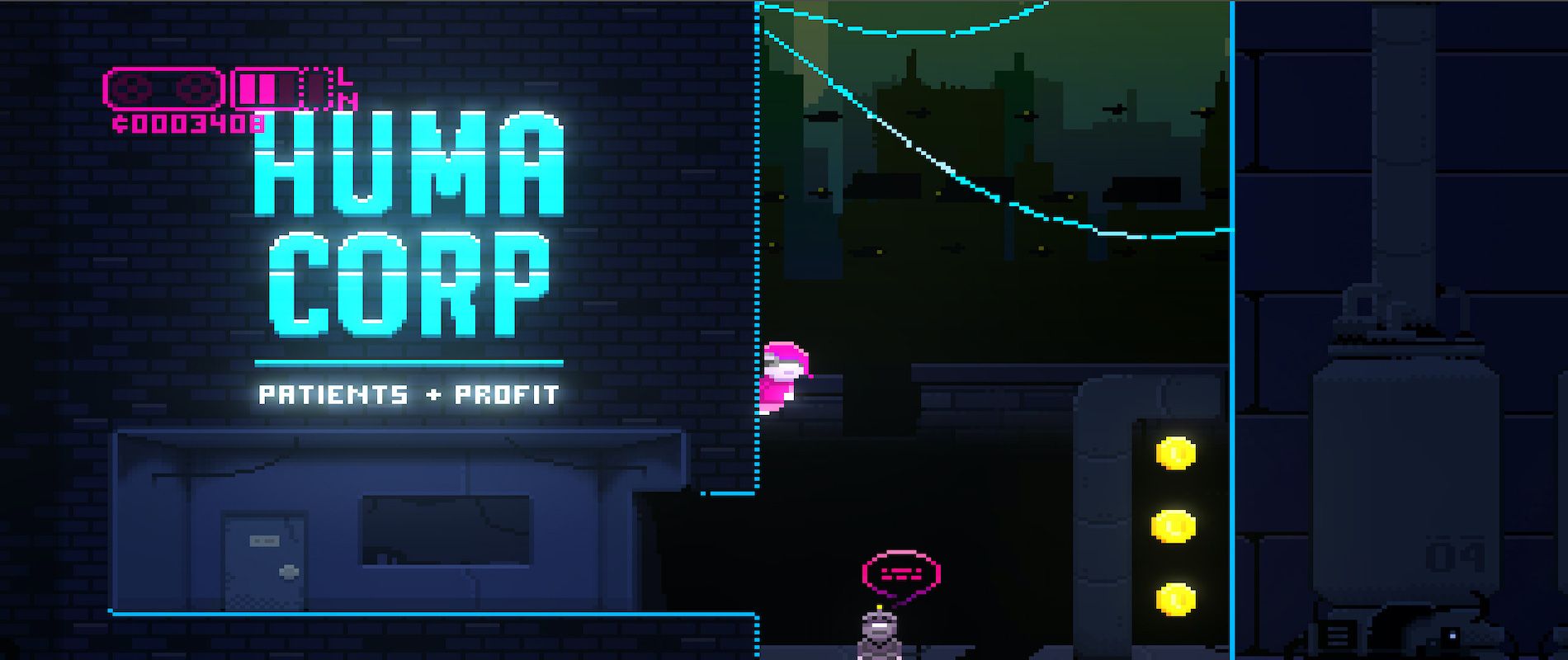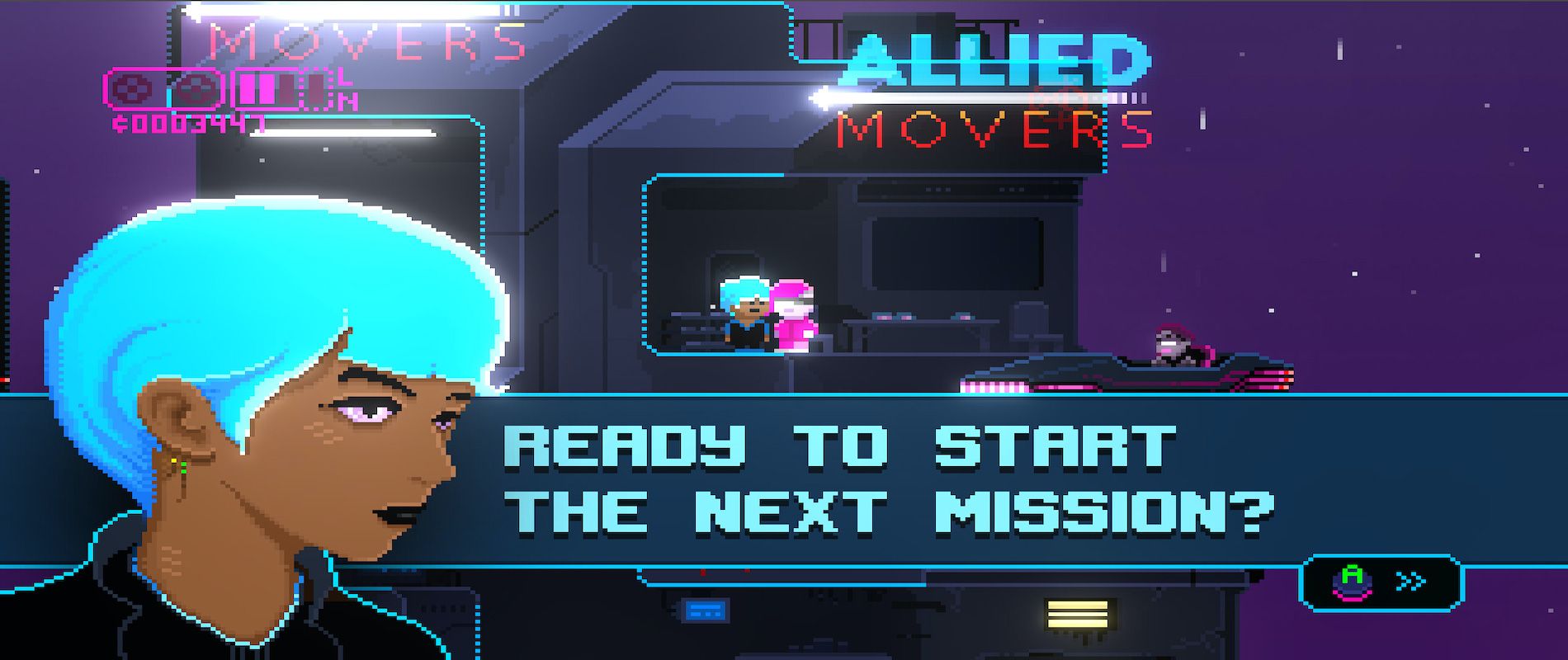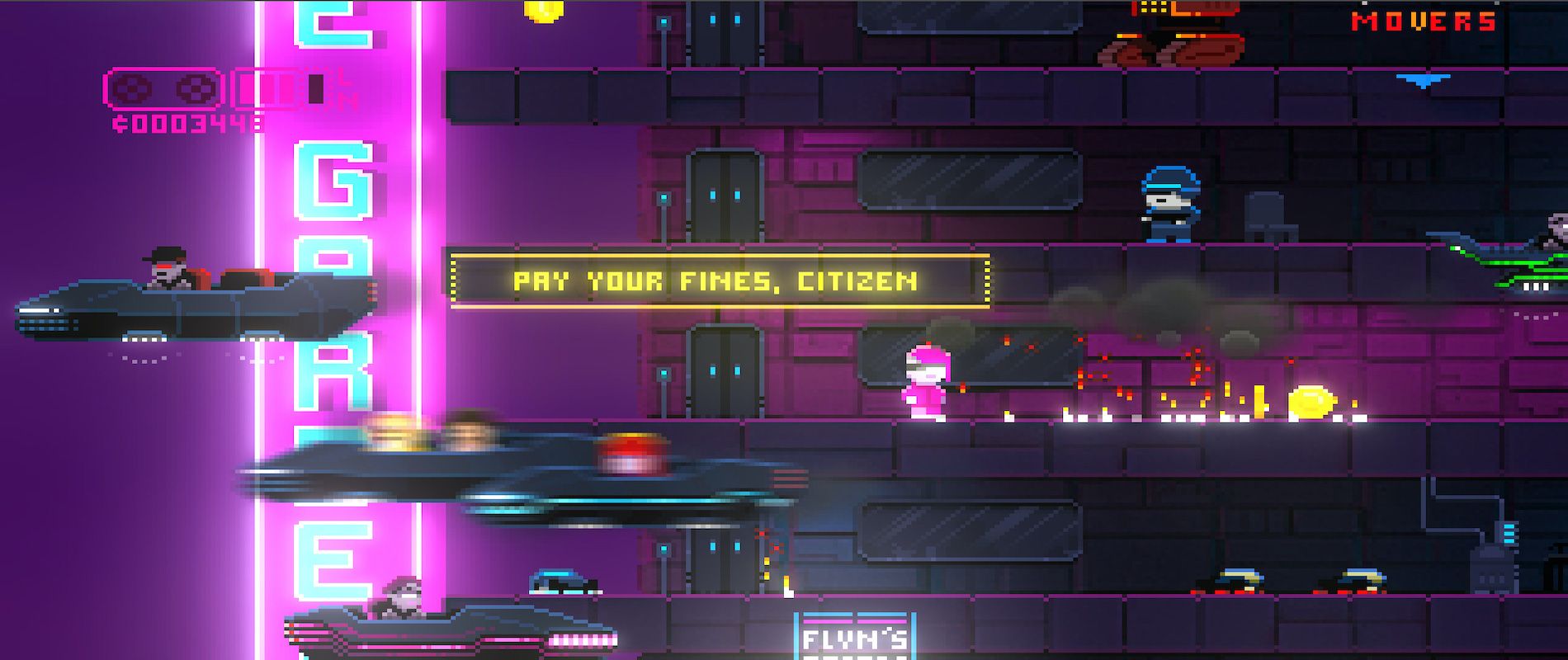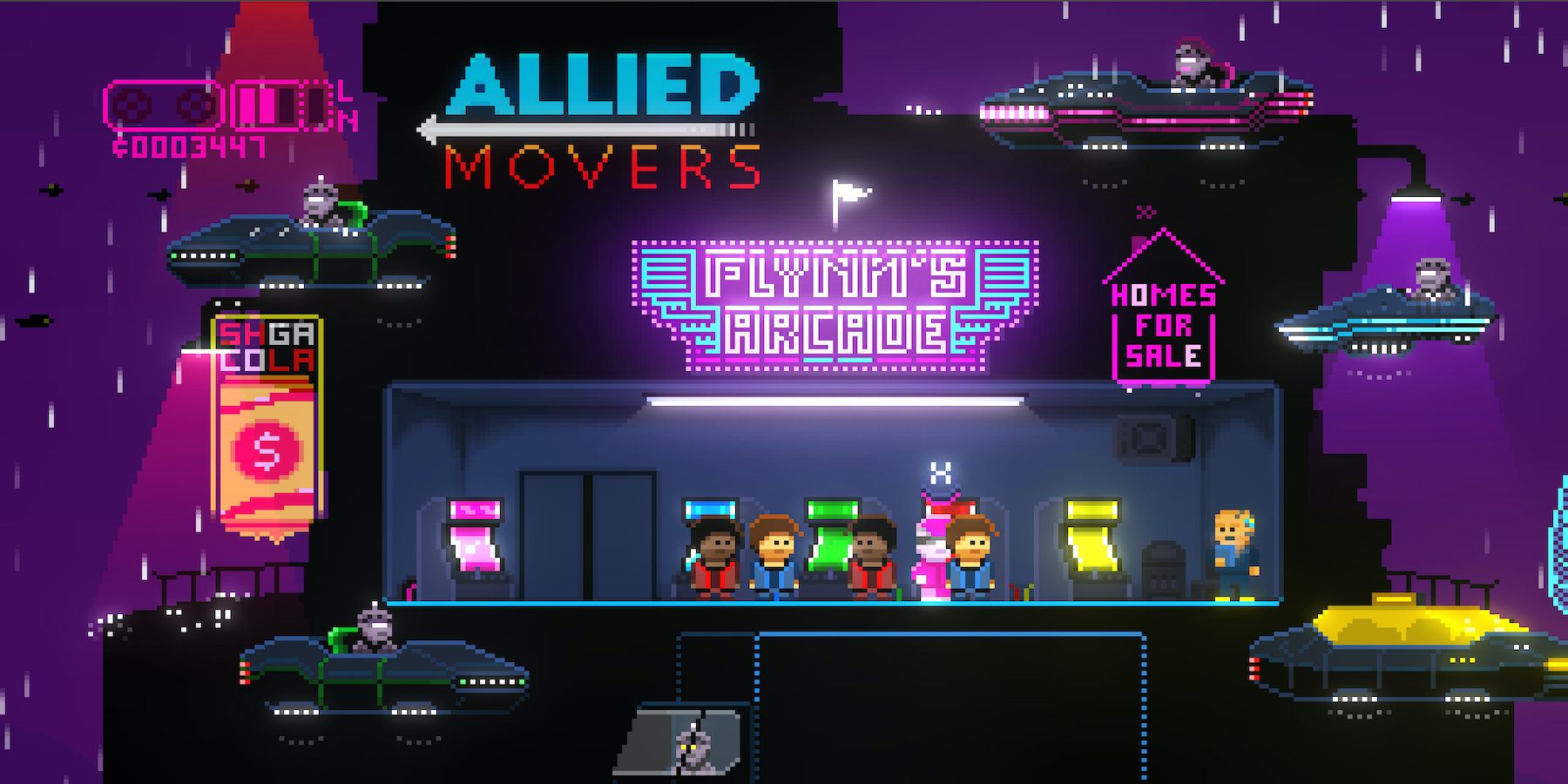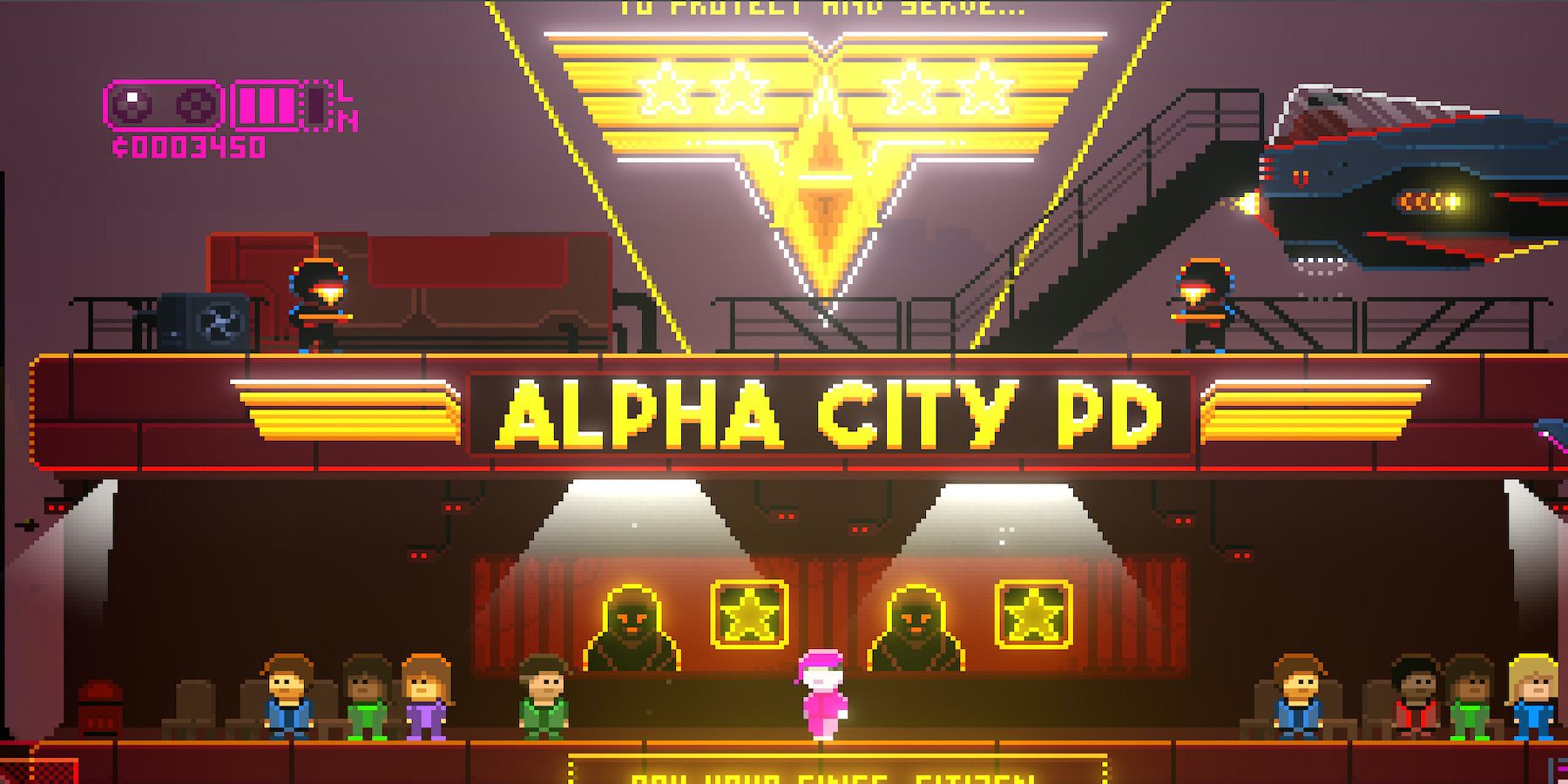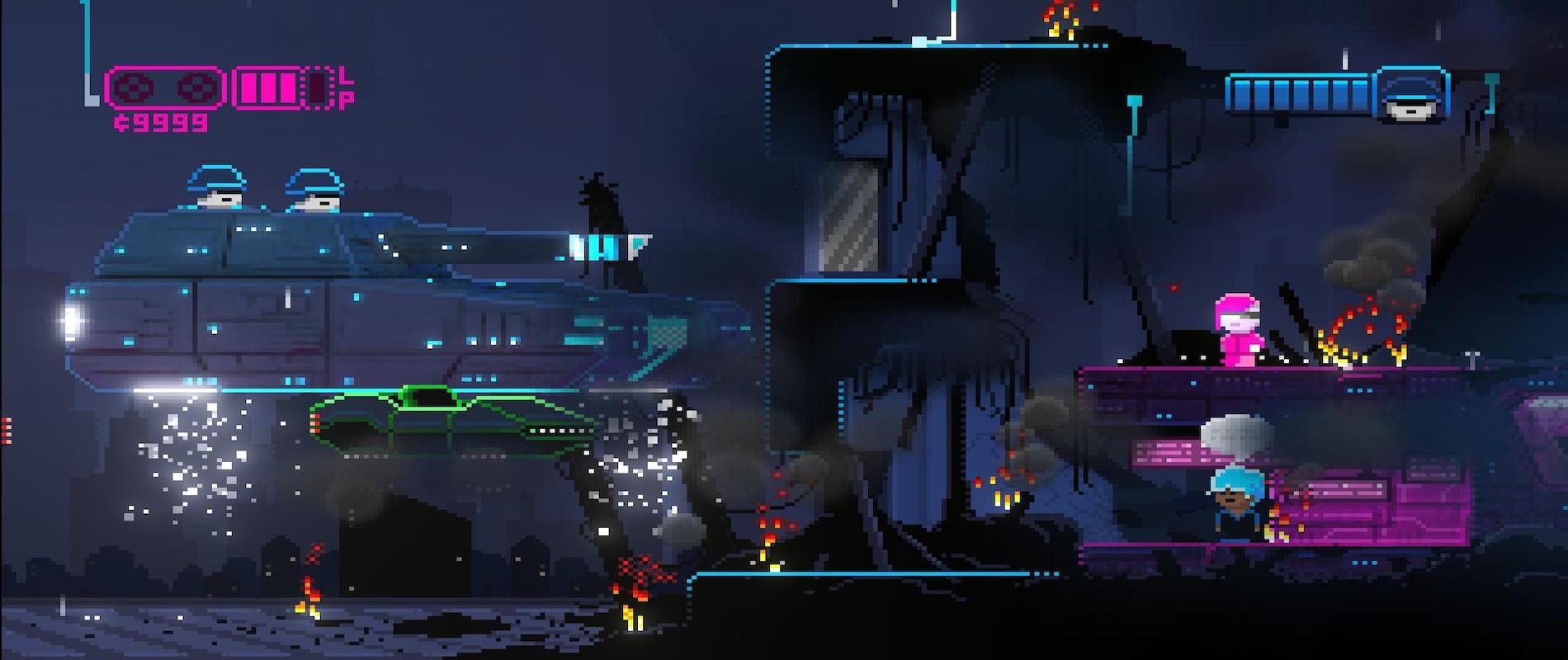Like many artists, game developers are innovators. Beyond building fun gameplay experiences or immersive worlds, developers aim to add something new to the conversation, something that sets their work apart from the greater gaming pantheon. Garrick Campsey, the solo developer behind upcoming side-scrolling platformer LAZR, has found a unique niche for his title: Cloth physics.
What started as a technical challenge between friends on a Discord server — to build a game that uses cloth as a key element — has grown into an ambitious indie title that aims to give players both a unique platforming experience, as well as all the trappings of an open-world game. Game Rant sat down with Campsey to talk about his experience developing LAZR and how he keeps all of those goals in balance. The transcript has been edited for clarity and brevity.
Q: Tell me a little bit about LAZR. What are the main things people need to know about the game?
A: I'll start with the mechanics. LAZR is a platformer that has cloth simulations in it. You can climb around on cloth, and on walls, and slide and shoot lasers. Throughout the game you fight different kinds of bosses and enemies. It has interesting mechanics — you don't usually see a platformer with cloth simulations.
Over time, LAZR grew from that mechanic into a world with its own culture. It takes place in a world that's a dystopian future, where three corporations run a giant city, kind of like Judge Dredd. You have to take down those corporations, and each one is an act in the overall game.
There are all kinds of bad guys and locations to visit. There are also lots of things to do, like adopting pets, or buying houses, or investing in businesses. There are a lot of open world elements that I'm trying to combine with a single-player platforming story. I just finished Act One, and I'm really excited about how it's all coming together.
Q: There’s lots to unpack here, but let’s start with LAZR’s cloth mechanics. That’s a pretty unique feature. How did that come about, and how does it manifest in-game?
A: The origins of the game actually came from a Discord conversation I had with a friend of mine in Germany, in which he challenged me to put cloth into a platformer. So I did, with some sprites I had laying around. It was fun and unique enough that I posted some stuff on Twitter, and it got some attention. That showed me that the world was interested in it, and that it was an idea worth pursuing. So, I decided to put everything that I had into it and see where it went.
What's interesting is that the cloth mechanics had to be written using a specific type of physics system, called Verlet integration, to simulate the cloth using springs, basically. It’s a simulation that provides the same outcome every time from the same set of starting conditions, which is really important when I’m simulating cloth, because I don’t want it to be different for each player, I want it to be the same, especially if people are going to speedrun. So, I put a lot of effort into the game’s physics.
Once that part was written, I decided to add platforming on top of that physics system. As far as I know, no other platformer has been written using this type of physics system.
As for how cloth works in LAZR, it has a lot to do with climbing. Most of the time, it's vertical, climbing up in some way. So as you’d climb up a wall, you can climb up the cloth.
As you climb up the cloth, there's a lot of different things that can happen. One of my favorites are these exploding mines that I added to some of the cloth. I can use all of these mechanics that would normally challenge a player on a wall, but on cloth instead — explosions, different kinds of enemies flying around, things like that. I can also connect traditional platforming areas with large sections of cloth.
Q: That’s definitely not something you see in a lot of platformers. On your Steam page, you call LAZR a “new generation of platformer.” Do you feel like you’re blazing a trail here? Do you think that future platformers might look to LAZR as an innovator in the genre?
A: I have two minds about that. My first opinion is, no, I'm not trailblazing anything. That's way too vain. I'm not smart enough to do that. And then the other opinion I have is, well, this is kind of novel and kind of cool. Maybe I am, but I don't know, I don't know how to verify that. Do we sit down with some physicists and ask, is this new? My peers think that it's interesting and different, and that's good enough for me.
Q: The other thing that seems unique about LAZR is its open-world mechanics. How did you integrate these more open-ended features into a platformer?
A: You're right, the traditional platforming formula is a linear sequence in which you go from A to B in a series of levels. That’s also part of LAZR. That's the main storyline. The game has 100 levels, which you progress through linearly. After level six, you're given an air bike. You can call this air bike anytime you want to, and when you call the air bike you now have a fast travel menu, which lets you go to your home or to a downtown area to talk to different vendors and get different upgrades. It also lets you go to this place called the Thunderdome, where you can fight and earn money, which is really important in the game. So, if you're tired of playing a linear story, then you can just get on your bike, fast travel to wherever you want to go, do something else for a little bit, and then come back to the story whenever you want to.
This is something that was really inspired by my experience with Destiny. I got kind of spoiled playing Destiny, being able to fast travel wherever I wanted whenever I wanted to. So when I played my platformer, I said to myself, ‘this is missing something.’ That ended up being the ability to leave a level and go somewhere else.
Fast travel functionality is critical to navigating in an open world, and I realized that it’s a tool I can use in a platformer like LAZR to give it an open world.
Q: Money has come up a couple of times now — you mentioned that it’s an important feature and it sounds like LAZR gives players the opportunity to buy things like properties and pets, or even trade on a stock market. What’s the utility of those things in your game?
A: So, I want to give players more choice. This is how you can choose how to play the game. The homes players can buy each have different, unique objects. On some homes, you can customize the way that you look, on other homes, there are garages. Each home has its own unique thing that it offers. By buying that property, you get access to whichever unique thing that it offers. I am thinking about adding a stock market into the game as well. So, one of the homes would then have access to the stock market so that you can buy and sell and trade stocks. Things like that give homes more value.
The other aspect of LAZR’s economy is collecting coins. There are different kinds of coins that you can collect, and then you can buy things with that money. It's kind of like an intermediary. When I want to reward the player, I can give them a bunch of coins, and then they can go spend it however they want to. I can do that instead of rewarding the player with something like a laser upgrade. Maybe they don't want to laser upgrade, they want a pet, or an artifact, or something else. There's a ton of stuff that you can buy.
Q: The game’s properties and the stock market all instantly made me think of Grand Theft Auto. You mentioned Destiny as an inspiration, too. What other games influenced your development process?
I was raised on Grand Theft Auto. When Grand Theft Auto 3 came out it was a changing moment in my life. It was a fully open world in 3D, and you could go anywhere and do whatever you wanted to. I remember sitting with my friends and just playing Grand Theft Auto for hours, just doing crazy stuff — blowing stuff up, or seeing where we could climb, things like that. So Grand Theft Auto has been hugely influential and inspirational, ever since I was a kid.
When I look at the game that I'm making, and I say, ‘how do I make this better,’ I think about those games, and I think about the mechanics that I enjoyed and the things that I really remember about them. One of those things is having homes, different safe houses to store vehicles. I always thought it was cool to buy a home in a game. Or, like in Grand Theft Auto: Vice City, you could buy businesses and it would generate money. I thought that was a really cool mechanic that I didn't see in a lot of other games. So I realized, I have the ability to put that into my game. Why don't I just do that?
Q: Let’s move onto development. Is LAZR your first time around as a developer?
My journey into game development has been interesting. I started doing game development in around 2010. I did it more as a side project, because I was really into visual effects, and I was working on films back then. I remember when I put some images from my computer onto my Xbox using Microsoft XNA, and I was like, ‘wow, this is amazing.’ I kind of got hooked on it.
For me, it was never about making a game and having a big name and everything. I just liked building games and then putting them on my TV and playing them. It was a really simple, almost childlike, interest at first, but I didn't give up on it. I just kept making games, and 10 years later, here I am with a couple of games under my belt. But now, I have a really big project with a lot of publicity.
This is my first project of that scale, but I've had other projects before this. I’m nervous and stressed out about it, but I’m also happy that I’m there.
Q: You’re developing LAZR solo, but you’ve got publisher Top Hat games behind you. What has your experience been with that dynamic? What have been the benefits and drawbacks?
A: After I came up with the idea and it got some attention on Twitter, I was immediately approached by a bunch of different publishers. Out of all of the deals that I was offered, Top Hat’s deal seemed like the best, just based on the amount of money that they wanted to loan to me. A lot of the other contracts that I read were essentially loans where, if the game didn't make money, I was on the hook for that. That was a step that didn't feel comfortable to me. So, when Top Hat approached me with a contract that wasn't like that, I had to talk with them to make sure that it was real. There are a lot of predatory publishers out there. It's really hard to be an indie dev and especially a solo developer, so it’s attractive to talk about money that would fundamentally change development. But, that money can come with a lot of strings attached to it.
I had to make a hard decision to turn down a lot of money from some publishers, and go with an option that gave me enough money to do what I need to do but still let me retain control over the IP, and a lot of other important stuff. That was my first experience with Top Hat. They offered me a contract that was fair and that wasn't taking advantage of me. The more I worked with them, the nicer they were to me, and the more they explained things to me. For example, I screwed up my Kickstarter campaign — I pressed a button that I wasn't supposed to, and sent a survey out eight months before it was supposed to go out. There's no way to undo that. But, Top Hat helped me through that. Even when I screwed up, they showed me how to fix it instead of just hanging me out to dry.
Eventually, it got to the point where they had some extra work, and they asked if I’d like to work for them. So I joined Top Hat as a multimedia producer as well as an indie dev. I’m wearing both hats, so I don’t have a lot of free time, but it’s been great.
Q: Based on my experience with indie devs, it seems like extra funding and support from publishers is pretty valuable. But it also sounds like there are a lot of potential pitfalls to navigate when you’re looking for that opportunity.
A: Yeah, that’s an issue that I don't think indies really address. The more money that you get, generally, the more strings that are attached, because you don't have a big name. There are a lot of compromises you have to make, and I think that the smarter choice is to take less money, and to go with a publisher that has a proven track record and is also a developer, versus a big publisher who has a lot more power over you to dictate terms.
Q: What has your day-to-day been like working on LAZR? What sort of challenges do you face?
A: The biggest challenge that I face is discipline. Things like waking up at a specific time, and sitting down and working from this time to that time. Motivation doesn't work that way. I may be laying in bed at 10pm, knowing that I should go to sleep in the next 30 minutes so that I can wake up and start working at eight or nine. But I may have a really good idea and have to act on it, so I may get up and start working until four or five in the morning. How am I supposed to go to sleep after that and then wake up at 9am?
It's this horrible balance between ‘am I doing enough,’ and ‘am I doing too much, and I need to take care of myself.’ I'm doing something that I love. but the main problem that I face is trying to balance everything.
I have to make a lot of compromises. I have pages and pages of notes that I have to go through and figure out which are good ideas and what I need to work on every day.
Q: A demo of LAZR is currently available on Steam. Have you gotten any feedback on the game based on that trial? What sort of changes have you made based on that info?
A: I've gotten a lot of feedback from friends, other developers, and playtesters through Top Hat. A lot of the feedback is good. I just have to take it and interpret it into things that I can actually change. Some of the feedback is not good. Some people don't like playing platformers, but they're playing one, so it's difficult to take their feedback constructively because they just don't like the experience that they're having. What I'm really looking for is somebody that enjoys the experience, but thinks there's some rough edges and has suggestions on how those rough edges could be fixed.
An example of player feedback: in the demo, the player moves a little bit faster, but in the actual game, I increased friction so the player moves a little bit slower, which gives players a little bit more reaction time to shape how they're traveling in the air. That was based on player feedback. A player said it was too slippery, and so I actually went back and polished the physics more so that it felt weightier. There were a lot of things like that.
Q: I know it’s probably a little presumptuous at this point, but have you given any thought to when LAZR might get a release?
I really do hope to do Early Access this year. My main bottleneck right now is completing all of the levels and the bosses. I could rush that out, but I don't want to. I really want to explore architectural styles for each corporation, and I really want to create unique bosses. For example, I'm working on a boss right now, and he has a move called “stock raise.” He raises both of his hands up in the air and green arrows appear and damage the player. I like thinking of those unique interactions and experiences that players can have.
I don't want to rush it, and I really want to make something unique and memorable. I think that has lasting power, versus something that's kind of disposable.
[END]
LAZR is coming soon for PC.

